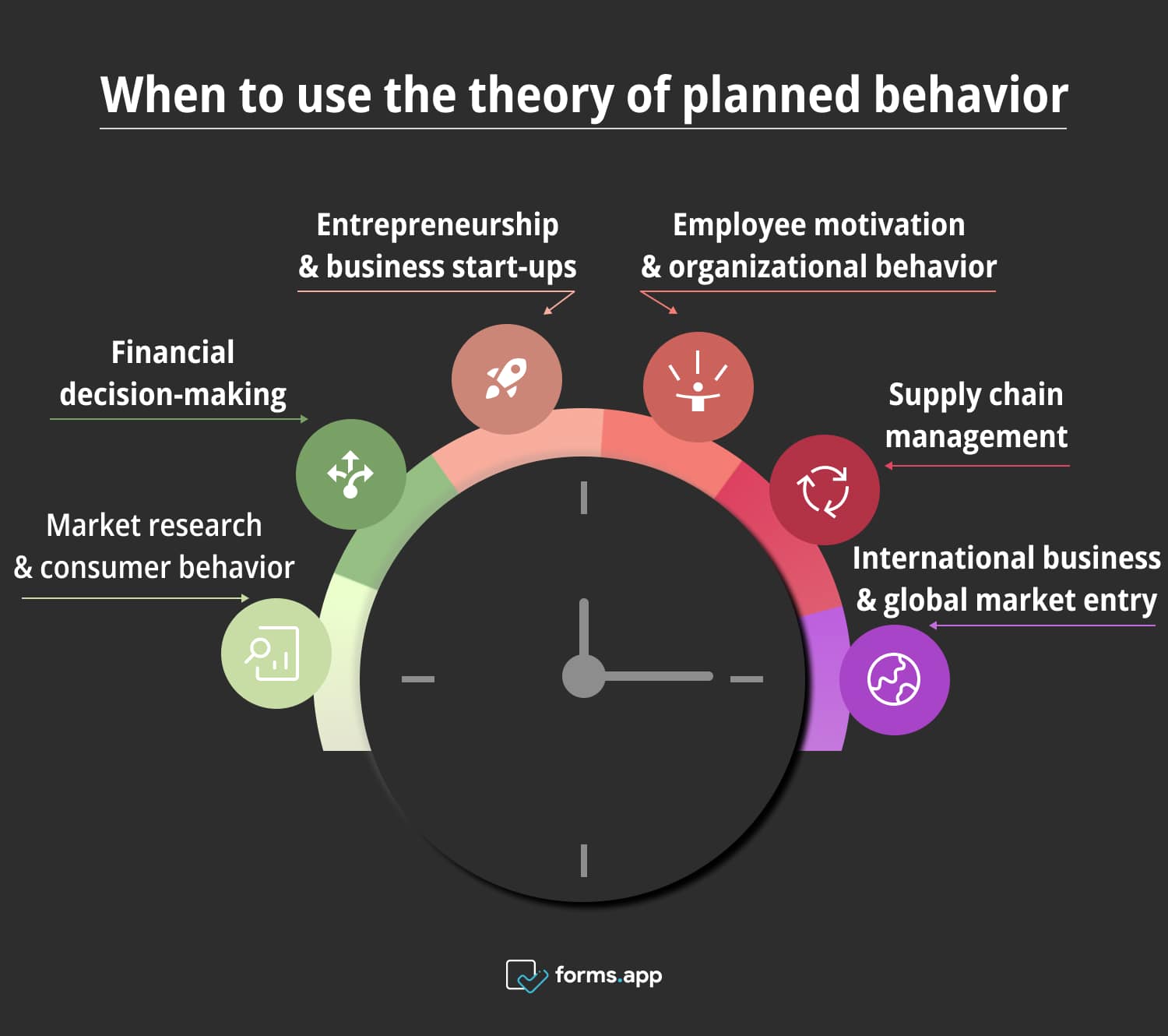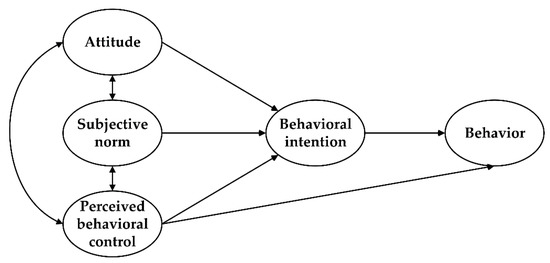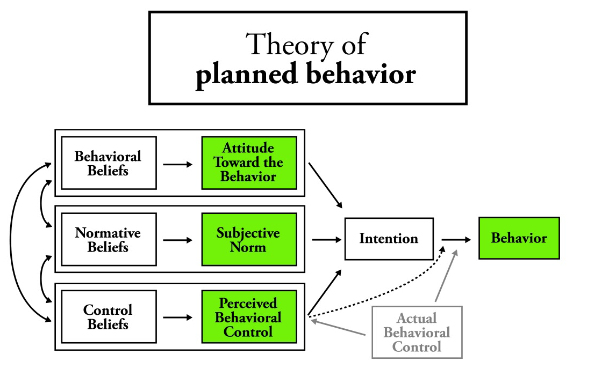Introduction
Overview of the Theory of Planned Behavior (TPB)
The Theory of Planned Behavior (TPB) provides a comprehensive framework for understanding human behavior. Developed by Icek Ajzen in the late 1980s, TPB posits that an individual's intention to engage in a particular behavior is the primary predictor of whether that behavior will occur. This theory is particularly valuable in fields like psychology, public health, and environmental studies, where understanding the motivations behind behaviors can lead to effective interventions. At its core, TPB emphasizes three critical components:
- Attitude: Personal evaluation of the behavior (positive or negative).
- Subjective Norms: Perception of social pressure to perform or not perform the behavior.
- Perceived Behavioral Control: The perceived ease or difficulty in performing the behavior.
The interplay between these components can significantly influence one’s intentions and subsequent actions.
Background and Development of TPB
TPB emerged from the earlier Theory of Reasoned Action (TRA), which focused primarily on intention and attitude. Ajzen expanded the original model by incorporating the element of perceived behavioral control, acknowledging that individuals often perform actions based on their confidence in their ability to execute them. This development has been instrumental in predicting various behaviors, from health-related decisions to environmental conservation efforts. For example, someone’s intention to exercise is influenced by how they feel about it (attitude) and their belief in their ability to stick with an exercise routine (perceived behavioral control). By understanding these dynamics, practitioners can design better strategies to promote desirable behaviors in various settings.

Components of TPB
Attitude
A person's attitude is crucial in shaping their intentions and behaviors. In the context of the Theory of Planned Behavior (TPB), attitude refers to how positively or negatively an individual evaluates a specific behavior. For instance, if someone believes that regular exercise benefits their health and overall well-being, they are more likely to develop a favorable attitude towards exercising.
- Key Considerations:
- Are the perceived outcomes of the behavior positive?
- How strong is the belief in these outcomes?
Creating positive attitudes can involve sharing success stories or demonstrating benefits through information sessions, offering compelling reasons to adopt certain behaviors.
Subjective Norms
Next, we delve into subjective norms, which reflect the perceived social pressure to engage in or refrain from a behavior. This can significantly influence decision-making. For example, if someone notices that their friends are adopting healthier eating habits, they may feel compelled to follow suit due to the desire for social acceptance.
- Influencing Factors:
- Opinions of family and friends
- Cultural context or societal expectations
Understanding these norms can help practitioners craft interventions that resonate with social circles, leveraging peer influence to promote desired behaviors.
Perceived Behavioral Control
Finally, perceived behavioral control refers to how much control an individual feels over performing a behavior. If a person believes they have the resources and skills necessary to quit smoking, they are likely to intend to do so.
- Critical Elements:
- Self-efficacy: Confidence in one’s ability to succeed
- External factors: Accessibility and resources available
By enhancing perceived behavioral control, such as providing support systems or skill-building workshops, individuals are empowered to take action. This holistic view of TPB’s components offers a robust framework for understanding and guiding behavior change.

Applying TPB in Real-Life Situations
Case Studies in Health Behavior
The Theory of Planned Behavior (TPB) has proven to be a valuable tool in health behavior research and interventions. For instance, a study on young adults and their intentions to engage in regular physical activity highlighted key insights about attitude, subjective norms, and perceived behavioral control.
- Findings from Health Studies:
- Individuals with a positive attitude towards exercise were significantly more likely to participate in fitness programs.
- Peer influence played a crucial role; those in supportive social circles exhibited stronger intentions to be active.
This shows how enhancing attitudes and leveraging social norms can drive health-related behavior changes effectively.
TPB in Environmental Conservation
Similarly, TPB has applications in promoting behaviors beneficial to environmental conservation. For instance, community initiatives to increase recycling rates often rely on understanding residents' attitudes, perceived norms, and control.
- Key Approaches:
- Conducting awareness campaigns that highlight the environmental benefits of recycling can shift attitudes positively.
- Encouraging local influencers (subjective norms) to advocate for recycling can help increase participation.
By integrating TPB into these initiatives, communities can craft tailored strategies that resonate with residents, fostering a culture of sustainability and encouraging consistent environmentally-friendly practices.

Challenges and Limitations of TPB
Criticisms of the Theory
Despite its widespread application, the Theory of Planned Behavior (TPB) is not without its criticisms. Some researchers argue that it oversimplifies the complexities of human behavior by focusing primarily on intentions as predictors of action. For example, an individual may intend to exercise regularly but fail to do so due to unforeseen life circumstances, illustrating that intentions alone do not guarantee behavior.
- Key Critiques:
- Lack of Emotional Factors: Emotions and feelings are often overlooked.
- Cultural Differences: The model may not adequately account for cultural variations in behavior.
These criticisms remind us that while TPB provides a useful framework, it may need to be adapted or integrated with other theories for a more complete understanding of behavior.
Factors Influencing TPB Effectiveness
Several external factors can also influence the effectiveness of TPB. For instance, environmental constraints like accessibility to resources or support systems can play a crucial role in determining whether an intention translates into behavior.
- Important Factors:
- Social Support: Having encouragement from friends and family enhances perceived behavioral control.
- Contextual Elements: Specific situations, such as a new work schedule or financial constraints, can hinder the execution of intended behaviors.
Understanding these influences emphasizes the need for a holistic approach when applying TPB, ensuring that interventions consider all facets of human behavior.
Enhancing TPB Application
Strategies for Increasing Behavioral Control
To boost the effectiveness of the Theory of Planned Behavior (TPB), focusing on enhancing perceived behavioral control is essential. When people believe they can successfully execute a desired behavior, they are likelier to follow through. Here are some strategies to consider:
- Skill Development Workshops: Offering training sessions to build necessary skills can empower individuals. For instance, hosting cooking classes for families wanting to eat healthier can elevate their confidence in preparing nutritious meals.
- Resource Accessibility: Ensuring easy access to resources, such as fitness centers or healthy food options, can alleviate barriers that may hinder action.
- Support Networks: Establishing community support groups can provide motivation and accountability, greatly enhancing perceived control.
Incorporating TPB with Other Behavior Theories
Beyond enhancing behavioral control, integrating TPB with other behavioral theories can create a more robust framework for understanding and influencing behavior. For example:
- Health Belief Model (HBM): Pairing TPB with HBM can address the perceived severity and susceptibility of health-related behaviors, adding depth to the approach.
- Social Cognitive Theory (SCT): Combining TPB with SCT can emphasize the role of observational learning and self-efficacy in behavior change.
This integrated approach allows for a broader understanding and more effective interventions, accommodating diverse population needs and contexts. By recognizing the complexity of human behavior, practitioners can optimize the impact of their interventions.
Practical Tips for Implementing TPB
Setting Clear Goals and Objectives
Implementing the Theory of Planned Behavior (TPB) effectively begins with setting clear, measurable goals and objectives. A well-defined goal lays the groundwork for individuals to understand their goals. For example, rather than stating a vague goal like "eat healthier," specify it as "consume at least five servings of fruits and vegetables daily."
- SMART Goals: Ensure your objectives are Specific, Measurable, Achievable, Relevant, and Time-bound.
- Break It Down: Divide large goals into smaller, manageable steps to maintain motivation.
This clarity helps individuals visualize their progress and aligns their attitudes and perceived control with the desired behavior.
Collecting and Analyzing Relevant Data
Another practical tip for implementing TPB is to collect and analyze relevant data. This step is vital for adjusting strategies as necessary. For instance, surveys or feedback mechanisms can gauge attitudes, perceived norms, and behavioral control among your target audience.
- Utilize Technology: Consider apps and tools that can track behaviors and provide valuable insights.
- Evaluate Outcomes: Regularly review the collected data to assess what is working and what isn’t.
By continuously monitoring and adapting based on this information, practitioners can enhance the effectiveness of TPB applications, ensuring they resonate with individuals’ motivations and social contexts.
Case Study: Applying TPB in Workplace Settings
Employee Engagement and TPB
The Theory of Planned Behavior (TPB) can be a powerful tool for enhancing employee engagement in the workplace. For instance, a company might utilize TPB to assess attitudes toward flexible work arrangements, aiming to boost productivity and morale.
- Understanding Attitudes: Surveys can gauge employees' feelings about remote work. Is it seen as a benefit or a challenge?
- Addressing Subjective Norms: By fostering a culture where leaders advocate for flexibility, organizations can change the social norms surrounding work practices, encouraging more employees to embrace these changes.
By aligning employee attitudes and perceived social pressures, companies can effectively drive positive team engagement levels.
Impact on Organizational Behavior
Implementing TPB in workplace settings also significantly influences organizational behavior. For example, a financial services firm applied TPB to instill a culture of health and wellness among its employees.
- Behavioral Outcomes: Initiatives like group fitness challenges led to increased participation in health programs.
- Sustained Changes: Over time, these shifts improved individual health and fostered teamwork, enhancing overall office culture.
Integrating TPB helps organizations create a holistic approach to behavior change, aligning employee well-being with company goals, ultimately leading to a more productive and engaged workforce.

Future Trends and Research Directions
Advances in TPB Research
As we look to the future, advances in the Theory of Planned Behavior (TPB) research are promising. Researchers are increasingly focusing on integrating technology, mainly through digital platforms and applications that can track behaviors in real time. For instance, health apps that monitor exercise and diet can direct feedback based on TPB constructs.
- Dynamic Models: Incorporating dynamic models that account for situational factors, such as stress or environmental influences, is emerging.
- Longitudinal Studies: More emphasis is being placed on long-term studies that examine how attitudes, subjective norms, and perceived behavioral control evolve.
These advancements aim to create a more nuanced understanding of behavior and improve intervention strategies.
Potential Applications in Various Fields
The applications of TPB are expanding across diverse fields beyond health. TPB can inform strategies to enhance student engagement and learning outcomes in areas like education.
- Environmental Behavior: TPB can foster greater participation in sustainability initiatives by addressing common barriers.
- Corporate Training: In organizational contexts, it can enhance employee compliance and motivation regarding training programs.
By exploring these varied applications, TPB remains a vital framework for driving behavior change, shaping our understanding of how people act in different contexts, and guiding practitioners in designing effective interventions.




